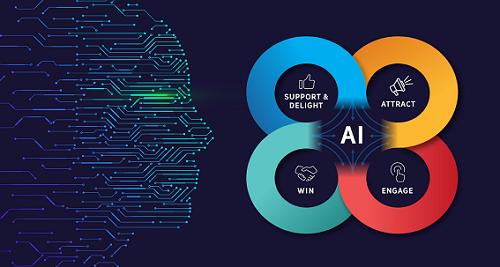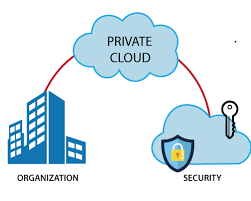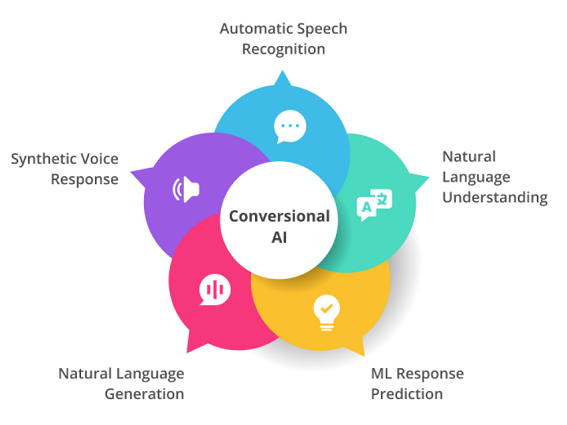The Booming Digital Twin Market: A Virtual Replica Revolution
The digital revolution is transforming industries, and the digital twin market is at the forefront of this change. By creating virtual replicas of physical entities, from products to entire cities, digital twins offer a powerful tool for simulation, optimization, and performance improvement. This article delves into the booming digital twin market, exploring its key players, segmentation, driving forces, and regional trends.
Market Overview:
The digital twin market size is likely to reach USD 64.76 Billion by 2030, expanding at a CAGR of 33.30% from 2022 to 2030. The Digital twin market has witnessed significant growth due to the increasing adoption of Internet of Things (IoT) technology, cloud computing, and big data analytics. Digital twin technology enables organizations to create a digital replica of physical assets, processes, and systems, allowing them to optimize performance, reduce downtime, and enhance operational efficiency. The market is being driven by the demand for predictive maintenance and asset performance management, and the need accurate simulation and modeling.
Key Players:
The digital twin market is highly competitive and is led by key players such as General Electric, Siemens AG, Microsoft Corporation, IBM Corporation, Oracle Corporation, ANSYS Inc., PTC Inc., Dassault Systèmes, SAP SE, and Altair Engineering. These companies are investing heavily in research and development to enhance the capabilities of digital twin technology and cater to the evolving needs of various industries.
Market Segmentation:
The digital twin market can be segmented by component, technology, application, and industry.
- By Component: The market is divided into platform, services, and solutions. Platforms provide the foundation for building and managing digital twins, while services encompass development, deployment, and integration. Solutions are pre-built applications tailored to specific industry needs.
- By Technology: Key technologies enabling digital twins include IoT sensors, cloud computing, artificial intelligence (AI), machine learning (ML), and big data analytics.
- By Application: Predictive maintenance, product design and development, process optimization, and performance monitoring are some of the prominent applications of digital twins.
- By Industry: The automotive, aerospace & defense, manufacturing, energy & utilities, healthcare, and transportation sectors are leading adopters of digital twin technology.
Get a Sample PDF of the Report at:
https://www.marketresearchfuture.com/sample_request/4504
Market Drivers:
Several factors are driving the growth of the digital twin market. The rising adoption of Industry 4.0 initiatives, the increasing demand for smart manufacturing and connected devices, and the need for cost-effective and efficient operations are major drivers of market growth. Additionally, the emergence of digital twin platforms, the integration of 3D modeling and simulation tools, and the focus on real-time monitoring and control are fueling market expansion.
Top Impacting Factors:
The digital twin market is influenced by various factors, including the rapid advancements in IoT and AI technologies, the growing trend of smart cities and smart infrastructure, and the increasing focus on sustainability and energy efficiency. Furthermore, the rise of digital transformation across industries, the impact of COVID-19 on remote monitoring and virtual collaboration, and the shift towards predictive analytics and data-driven decision-making are shaping the future of the digital twin market.
Regional Analysis:
North America holds a significant share in the digital twin market trends, driven by the presence of major technology companies, the increasing adoption of IoT and cloud-based solutions, and the strong focus on innovation and technological advancements. Europe is also a prominent market due to the emphasis on smart manufacturing, industrial automation, and the implementation of digital twin technology in aerospace and automotive sectors. The Asia Pacific region is witnessing substantial growth, attributed to the rapid industrialization, the adoption of IoT in manufacturing, and the increasing investment in smart infrastructure projects.
Industry Latest News:
In recent industry developments, Siemens AG introduced a new version of its Simcenter 3D software, enhancing the capabilities for digital twin simulation and analysis. General Electric launched a digital twin platform for power plants, enabling predictive maintenance and operational optimization. Microsoft Corporation announced strategic collaborations to integrate digital twin technology with Azure IoT solutions, offering comprehensive insights and predictive analytics for industrial assets.
The US digital twin market is poised for significant growth, driven by technological advancements, the increasing demand for predictive maintenance, and the integration of IoT and AI technologies. Key players are investing in R&D to enhance the capabilities of digital twin technology, and the market is witnessing expansion across various industries and regions. As organizations continue to prioritize operational efficiency and real-time monitoring, the digital twin market is expected to play a pivotal role in shaping the future of smart manufacturing and connected ecosystems.
Contact Us:
Market Research Future®
99 Hudson Street,5Th Floor
New York, New York 10013
United States of America
Phone: +1 628 258 0071(US)
+44 2035 002 764(UK)
Email: sales@marketresearchfuture.com









Leave a comment